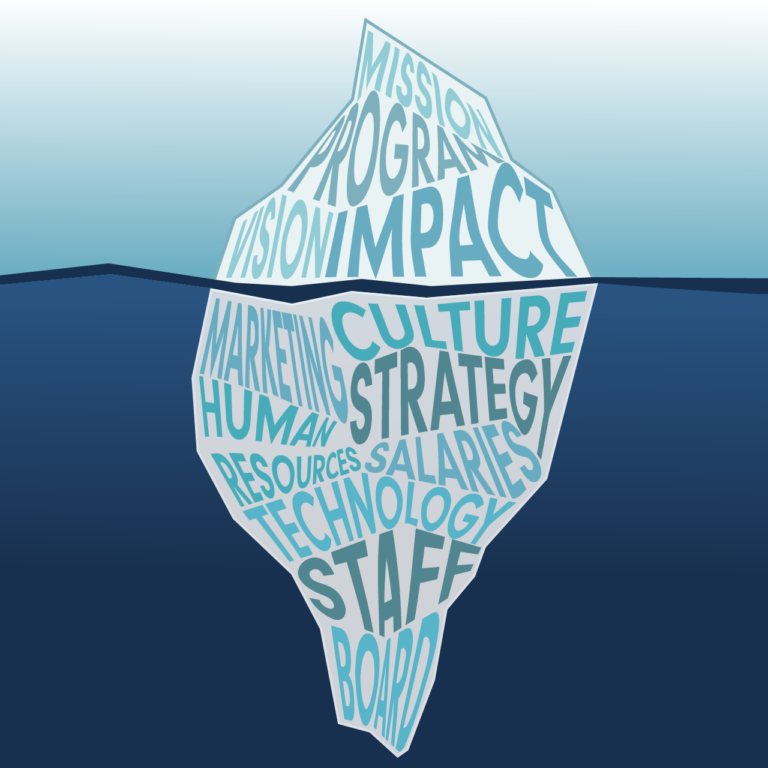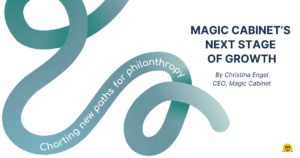When you see an iceberg, the portion visible above water is only a tiny part of a larger whole. You can think of nonprofits in the same way.
Nonprofits are typically thought of and evaluated based on the characteristics that funders can easily see—mission, programs, and of course, impact. However, these are just the visible outcomes of broader and deeper components of nonprofits’ inner workings. Deep below the waterline of every nonprofit lies an enormous, invisible infrastructure keeping its organization afloat.
While frequently invisible and often overlooked, we believe that infrastructure supports and shapes nonprofits into forces of change.

Strengthening this internal capacity within nonprofits improves systems, teams, and skills that make the entire organization more effective and sustainable, enriching existing programs and services for the communities each nonprofit serves.
“Capacity building is an investment in the effectiveness and future sustainability of a nonprofit. It is about looking at the whole nonprofit and strengthening an organization's future sustainability. That can come in many forms of support, from the financial system, fundraising, staff, management, and governance. Capacity building is not just about the capacity of a nonprofit today—it's about the nonprofit’s ability to deliver its mission effectively now and in the future.”
- Magic Cabinet's Capacity Building Definition
That’s why we focus on infrastructure and capacity-building investments at Magic Cabinet, a largely overlooked and under-appreciated area of grantmaking and philanthropy. We see these “below the waterline’’ components as the common denominator that sets thriving organizations apart—and sets them up for success.
Magic Cabinet emphasizes investment in nonprofits’ capacity building to grow more robust and effective from the inside, empowered to increase their ability to achieve their missions and sustainably serve their communities. Through our partnerships with nonprofits, we’ve observed that organizational capacity significantly affects employee retention, productivity, performance, and impact. Though only a tiny part of an organization’s capacity is visible above the water, these deeper systems and structures can profoundly drive the organization toward success.
Take this example from a Magic Cabinet Nonprofit Partner who shared the internal conversations that they are having about building their own internal capacity.
“The more staff that we have to do one-on-one interaction with our students, the stronger the students are. When one person is trying to work with 70 students, that's very hard to do, but if you split that into two, suddenly, it becomes manageable and doable. So, for us to be able to hire those additional people will make a world of difference to the students that we're working with.”
– Nonprofit Partner
We see capacity-building as the input needed to bring a nonprofit to the next level of operational, programmatic, financial, or organizational strength, so it may more effectively and efficiently advance its mission into the future. Ultimately, these ‘below water’ functions only become visible when philanthropy interacts, funds, and, most importantly, forms genuine trust-based partnerships. By understanding and supporting the entire iceberg of a nonprofit, philanthropy can begin to truly partner and elevate nonprofits and transform the philanthropic sector on a large scale.
You can learn more about how Magic Cabinet approaches our work with nonprofits and communities here.



